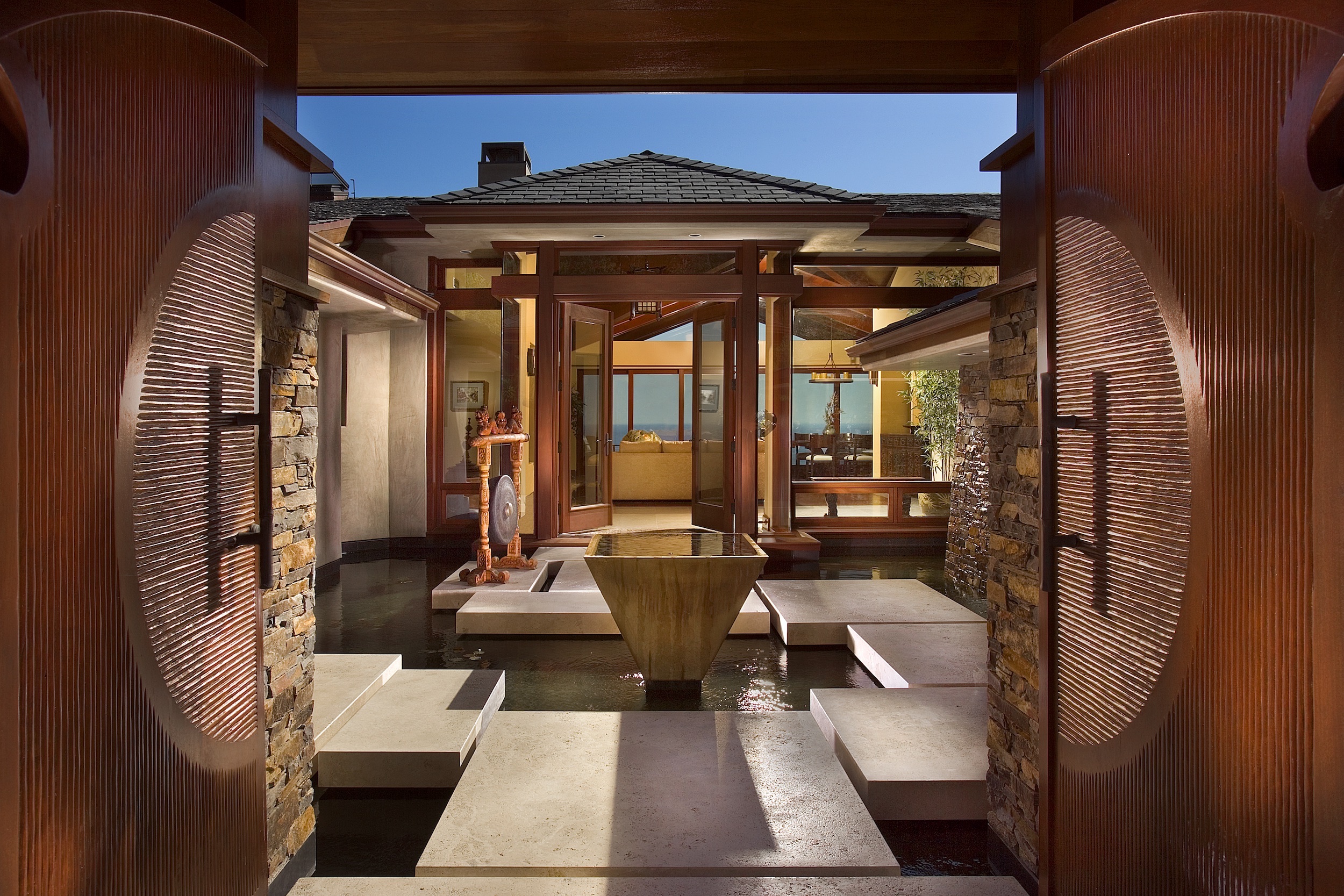
Enhance relaxation and tranquility in the home by creating healing spaces that elevate overall wellness.
By Ashley Ryan
Whether you’ve put in a long day at the office or were simply out running errands, there’s something magical about coming home to unwind in a space that’s all your own. But that sentiment rings true tenfold when each room offers a sense of peace and tranquility.
As people seek out new ways to calm the mind, body and spirit, wellness activities are on the rise. But few things are more impactful than designing a healing home—one where you can rest and recharge in a setting that provides safety and comfort.
“The home should be a place of relaxation, peace and a place to recuperate,” says Dawn Sumerford, founder of Feng Shui by Dawn.
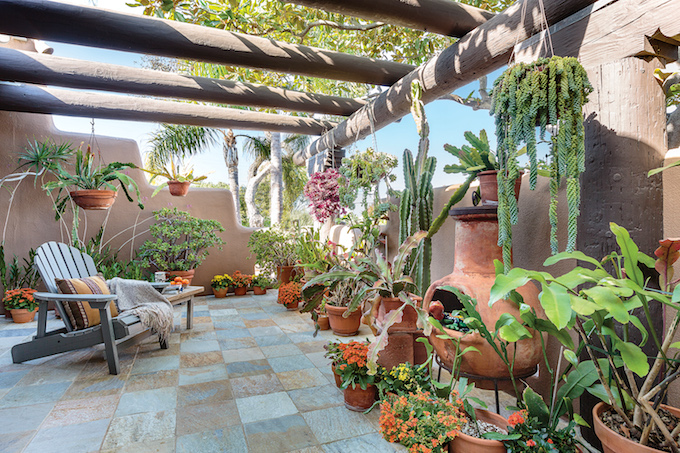
Finding peace at home is pivotal to living a healthy lifestyle. Dora Brigham, who owns Dora Brigham Interiors and earned a degree in psychology, says that there can be psychological benefits as well. “Relaxation and decompression are usually supported by a release of pressures from our mind and body,” she explains. “That release allows our mind to evaluate those pressures and decide on a course of action to repair or correct them. It therefore allows our mind to find that stability and balance needed to continue daily life.”
Discover how to turn your house into a Zen-like oasis with these tips from local experts.
The Building’s Bones
Not everyone will have a say in the structure of their space, but those who do can create calming homes right down to the building’s bones. According to Brion Jeannette, lead architect at Brion Jeannette Architecture, the orientation of the house is just as important as what’s inside.
“The art of feng shui is really letting nature become part of the balance of your life,” he explains. “… Start the day off with sun coming in the kitchen and family area. You don’t want to have those spaces on the evening, or north, side of the house; you want them on the east side.” The entrance? Face it south, he says.
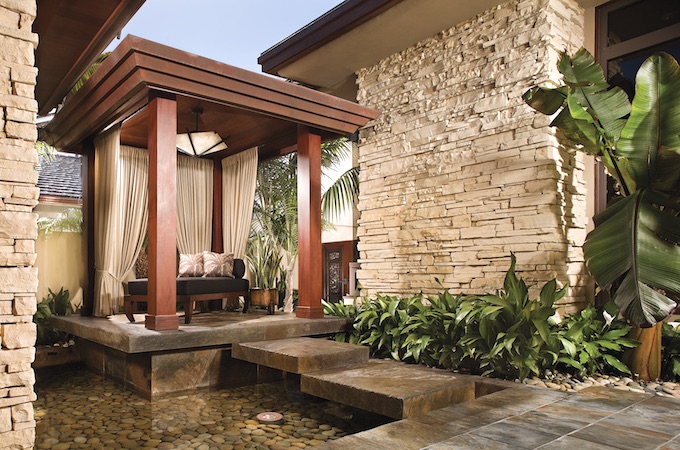
But there are a few things that should be avoided as well: Don’t point the stairs toward the front door, as your wealth will escape, and ensure there are no nearby roofs pointing at the windows like daggers. Do, however, consider a zigzag entryway, which takes guests on a little trip when approaching the front.
Once you venture inward, Jeannette recommends creating quiet, pensive spaces that you can retreat to by adding landscaped areas for a natural touch. Courtyards can also be relaxing, in addition to rooms designed for yoga or meditation.
“Living our busy lives in a loud world, our home is often the only space [where] we can relax and exhale,” Brigham says. “No matter what your responsibilities at home, everyone should have a space that is tranquil to the senses.”
But save these calming spaces solely for rooms where that type of atmosphere is needed. “Home gyms and … offices should give us energy and not necessarily tranquility,” Sumerford notes.
Serene Scenes
When it comes to decorating, interior design plays a pivotal role in the feel of the home. One of the most important choices you’ll make is selecting the color scheme. Sumerford suggests calming colors, from lavender or baby blue to soft gray, peach or white.
Jeannette agrees: “The light greens and blues that are not in your face seem to be the colors that are most comfortable; [they] tend to be the ones that support the concepts of feng shui really nicely.”
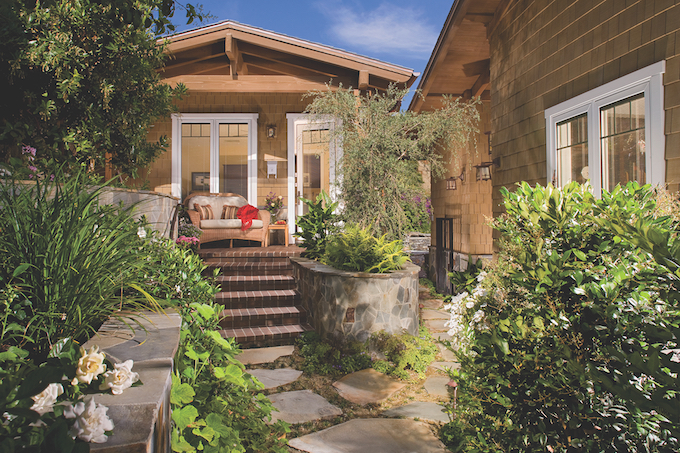
As far as materials, he recommends using natural substances, like different types of wood, to both decorate and build the interior space, adding that mahogany and cherry woods are always a hit. “These evoke—right off the bat—a warm feeling,” he notes.
Breathable, versatile fabrics can be used to add life to the space as well, with soft cottons, bamboos and linens being ideal options for Sumerford. Add some texture to give yourself something to focus on while unwinding or meditating as well, with silky suede or smooth velvet pillows and blankets.
Once the base is in place, begin layering in furniture and decor. “Zen spaces should be minimalistic, comfortable and functional,” Sumerford notes. Try to avoid hard lines; rounded corners are ideal. Soft chairs or sofas with footstools can offer a place to kick back with your feet up. Or, Brigham says, opt for furniture that is comfortable in width and depth, such as a chaise lounge or chairs that you can curl up in.
House plants, nature-filled art and candles can also help you breathe deeper. “Well-designed, clutter-free spaces with these types of pieces are excellent ways to create a calm, relaxing atmosphere,” Sumerford says.
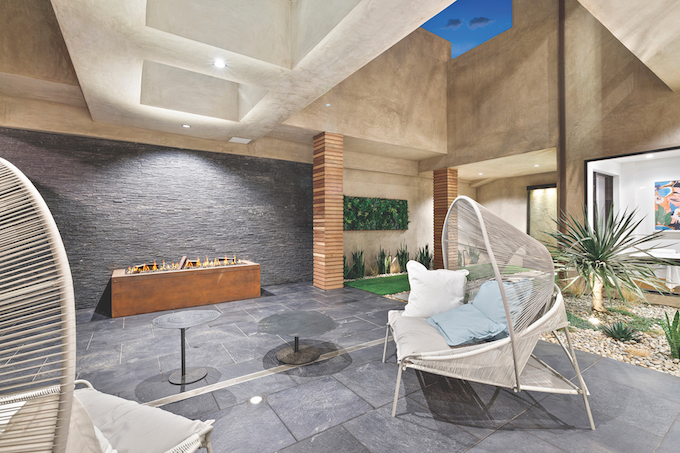
When adding artificial lighting, she recommends soft lights that are also dimmable so you can alter the atmosphere in the room at will. Pendant fixtures are a good option aesthetically, though she says fairy lights can also add to the mood. “These types of lights … can help reduce anxiety,” Sumerford says.
Jeannette, however, recommends skipping light fixtures in favor of indirect lighting systems. “When we design houses, … we create a layering of light so that you can have just a soft, moody, indirect light—where you see the glow of the light, but you don’t see the fixtures,” he explains. This can be done with recessed lights or lighting under a cabinet, which adds ambiance without in-your-face brightness. Then, he says, add in table lamps or wall sconces as accent pieces. “Don’t put a light in that’s going to be harsh,” he adds. “Let’s put a light in there that’s going to be very soft and maybe almost subliminal.”
And sometimes, if you’re going for a refresh, remember that you don’t have to change it all. “I’ve gone into a client’s home and they share … feelings of anxiety with me, [then] I look around and ask if I can change some artwork that may be too energetic,” Sumerford reveals. “… And voila—after making these simple changes, they felt more calm.”
Essential Elements
Feng shui dictates the flow of energy through a space, but it also focuses on essential elements. “When considering spaces, all five feng shui elements should be incorporated: fire, earth, metal, water and wood,” Sumerford says.
And the words themselves—feng and shui—mean “wind” and “water,” revealing just how crucial these elements are to the foundation of the practice.
“Water … is very soothing,” Jeannette says. One way he often incorporates it in the home is through the use of fountains with natural rock stones. “We like to backlight it so you get a nice glimmer off of it,” he reveals.
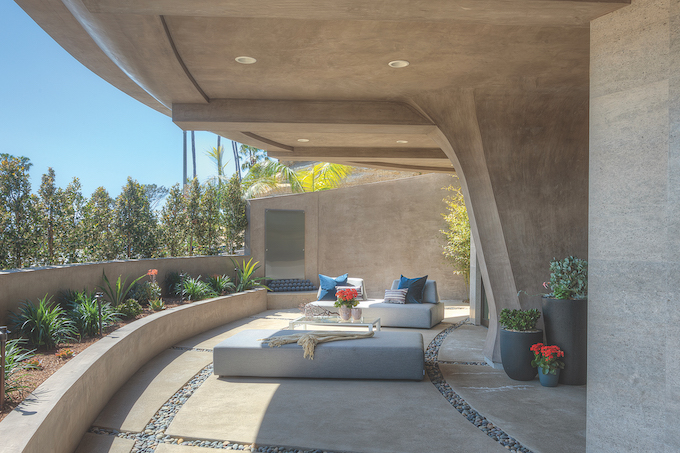
Fire is another ingredient that Jeannette likes to add to the mix, noting that it’s like water in that you want to keep it calm and soothing. “Keep it low flame, don’t get too aggressive and let it provide both warmth as well as visual stimulation,” Jeannette says. “… I’ve actually done fountains where I have a ring of fire with bowls of water above it that kind of cascade [down].”
But air and light play roles as well. “When you look at the passive aspects of architecture and sustainability, the wind aspect is something that we use a lot,” he says. “… You [can] create convection currents, [which] … are automatically going to cool the house down. So in that case, the wind aspect is creating an environment that’s more comfortable.” Sumerford adds, “Meditating, yoga and unwinding spaces should be open and airy so ‘chi,’ [or life energy,] can flow.”
Homeowners should also strive for as much natural light as possible. “That morning sun is going to warm you up [and] it’s going to feel right from the beginning,” Jeannette says of the mood in the home. “… One of the worst spaces is a space without windows. Then you’re sort of stuck in a box.”
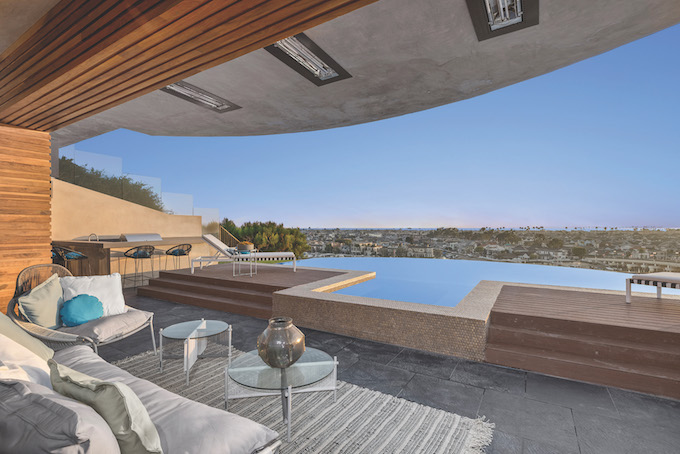
Natural light can transform nearly any room into a relaxing one, according to Jeannette. Consider the bathroom. “Put a skylight … in the bathroom, because you want that to be the part of the house where you get the morning sun.” Connecting the bathroom to an outdoor space with a garden, hot tub or sauna can let in natural light while creating an extension of the interior space.
Whether you consider the fundamentals of feng shui or simply do what looks good, using these tips will transform your home into a space that elevates your wellness and feels good, too.




